Fletchings are designed to help stabilise, control and spin the arrow. In this article we'll address what different types of fletchings do, as well as how the sizes and placement on the shaft impact the arrow flight.
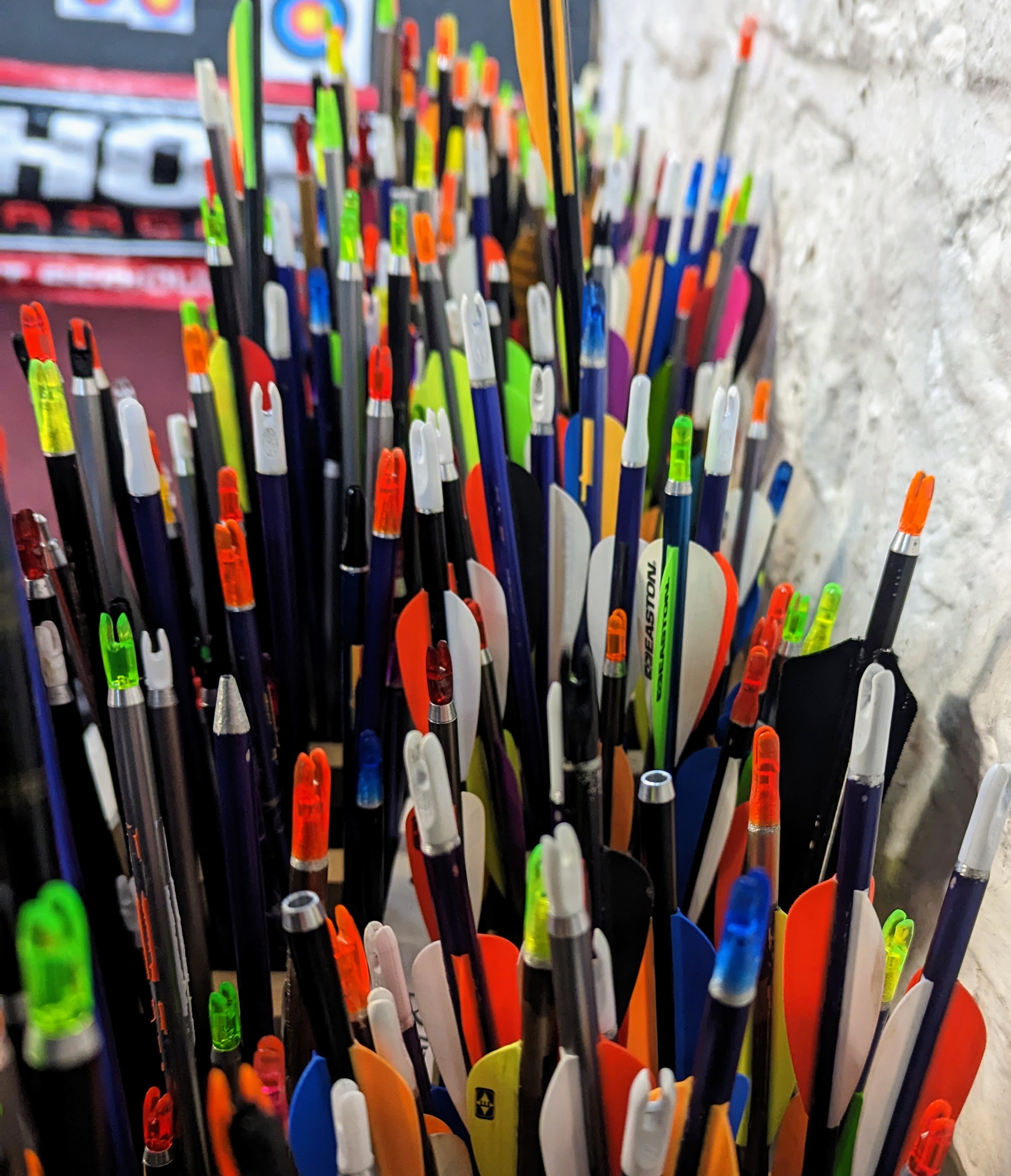
The position that an arrow is fletched is very important. In compound shooting with a release aid, you want the fletchings as close to the nock as possible so that there is nothing to interfere with the fletchings.
In recurve shooting, the fletchings should be close to the nock but not too close – the reason is because if you open your fingers and the fletchings are too close to the nock, you can cause contact, which can interfere with the shot cycle. But, if the fletchings are too far down the shaft they won’t help to control and steer the arrow. Usually a distance of around an inch from the nock groove to the start of the fletching is good for recurve. However, everyone has different-length fingers so it is worth checking if your fingers are contacting the fletchings.
Plastic vanes are one of the most popular choices of fletchings. Easy to fletch, waterproof and extremely durable, the plastic vane needs very little maintenance, making it an all-round good choice.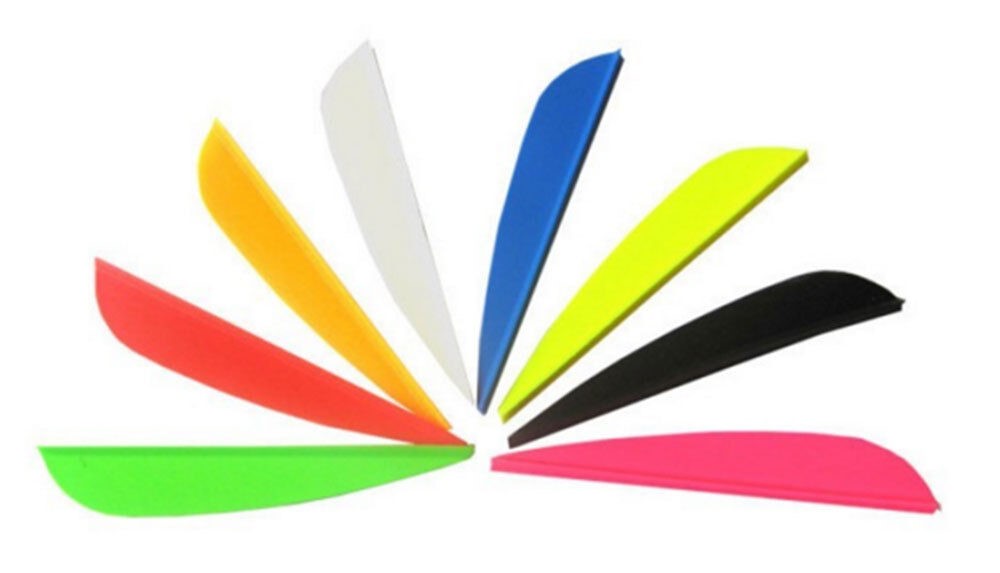
Feathers are used in nearly every single traditional shooting style, however you might be surprised to learn that many top archers use feathers for certain events, such as indoors. They are lighter than plastic vanes and, due to the texture, have better air flow allowing the arrow more control. Feathers also hold their shape extremely well in both hot and cold conditions.
The downside to feathers are twofold: firstly, if an arrow comes into close contact it can cause damage to the feather, which then needs replacing. Second is that due to the nature and make-up of a feather, they are very susceptible to absorbing moisture. This not only makes the feather heavier, but it also temporarily shrinks, resulting in far less control and stability.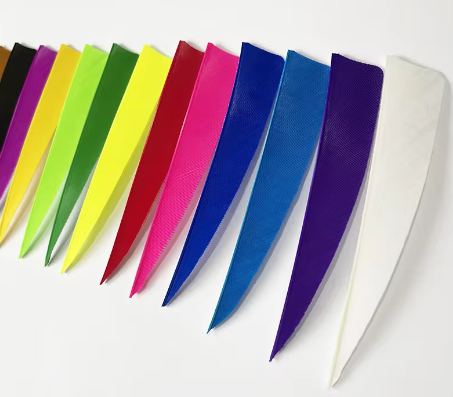
Spin vanes are designed to alleviate the ‘archer’s paradox’ much quicker than a plastic or feather vane. This results in far less drag force, which allows the arrow to stabilise much more quickly and makes for tighter groupings. Spin vanes are also very light when compared to a plastic vane; they are however very fragile and can be high maintenance.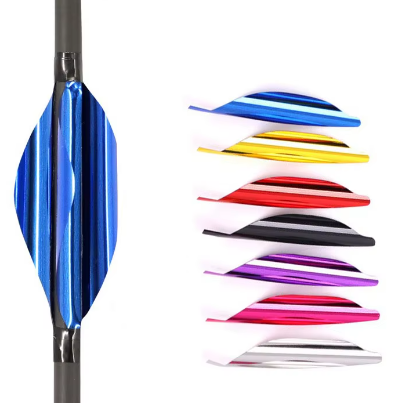
Straight fletchings offer maximum speed at the cost of reduced stability, which is compensated when shot over long distances as the arrow has time to straighten back up.
Helical fletchings offer maximum stability, allowing for greater accuracy due to the arrow coming under control faster. The downside to these is that the arrow does lose speed, and it can cause contact issues.
Whether you are choosing plastic, feathers or spin vanes, the fletching will perform the same way whatever its size.
Smaller fletchings, around 1.75", give maximum speed at reduced stability as it takes the vane longer to control the arrow. This is the ideal length if you are shooting over longer distances as it gives the fletchings time to straighten up the arrow.
Larger fletchings, such as a those around 4", allows for maximum control and stability, straightening up the arrow as soon as possible, which creates a very forgiving arrow but at the cost of loss of speed - potentially better for indoor distances. 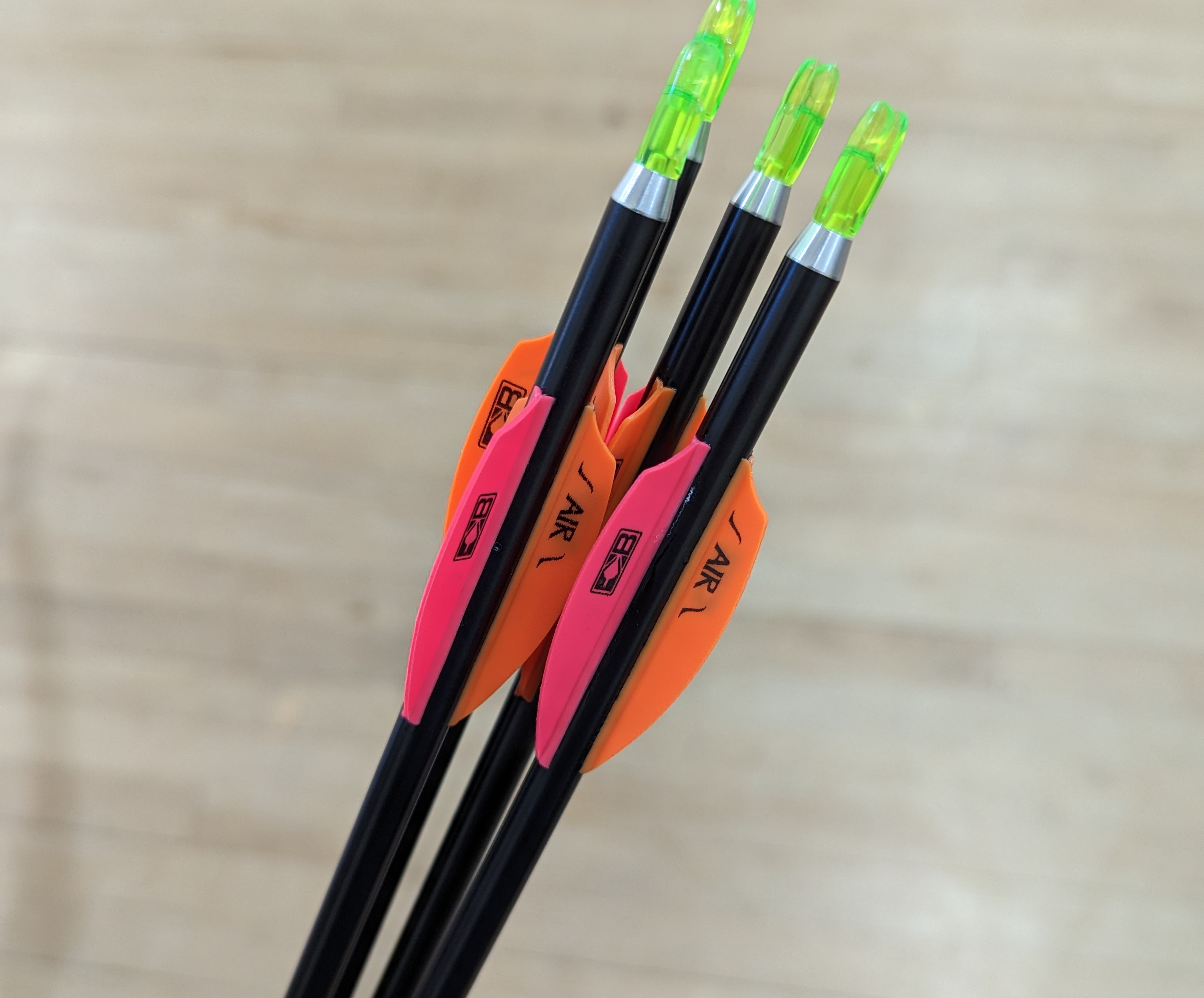
Thanks to Adam at Wales Archery.